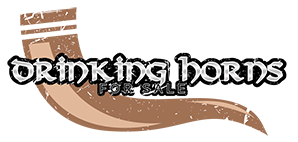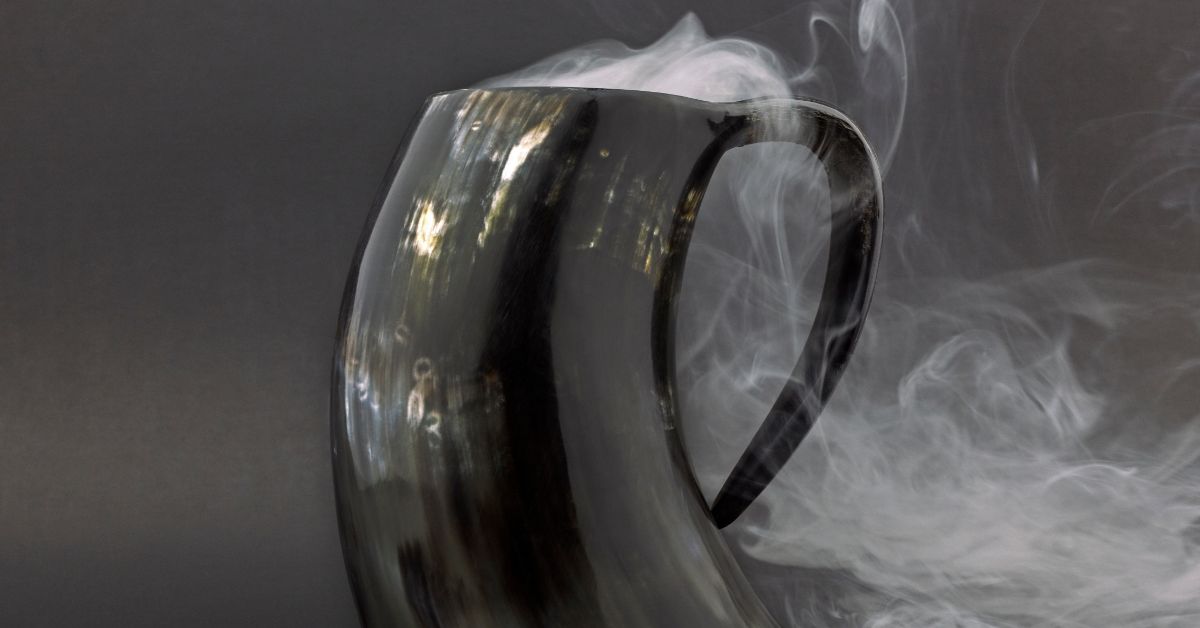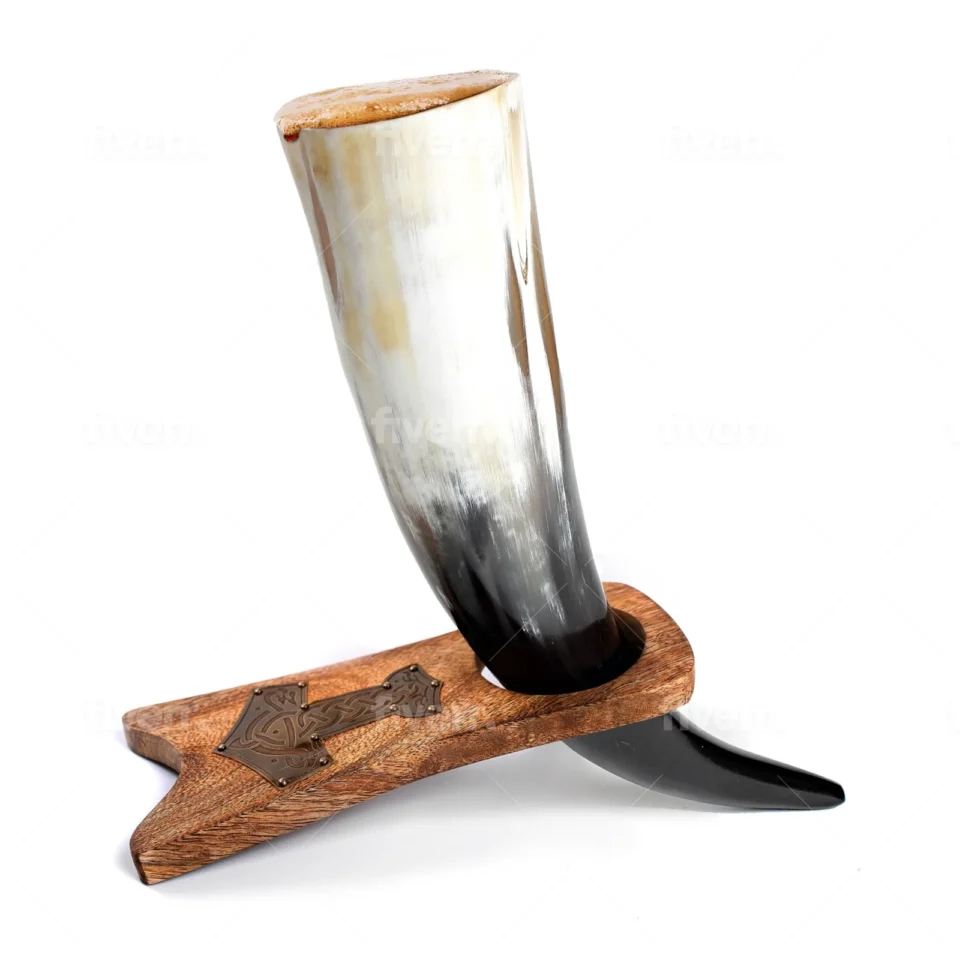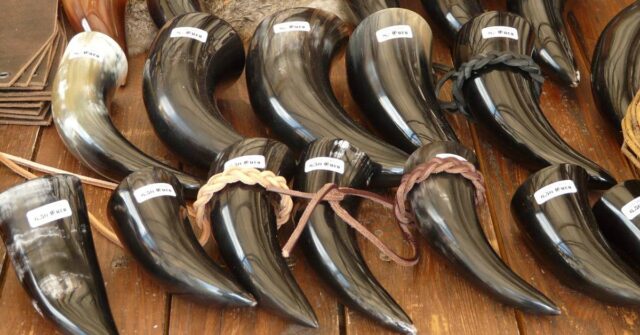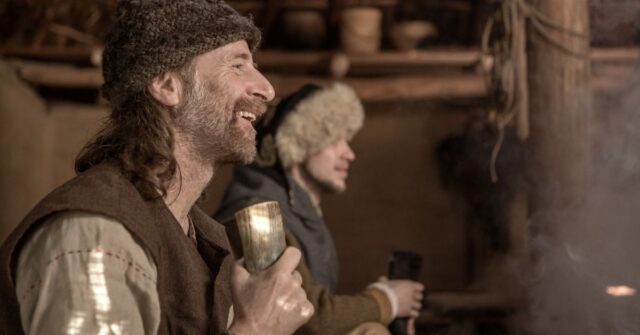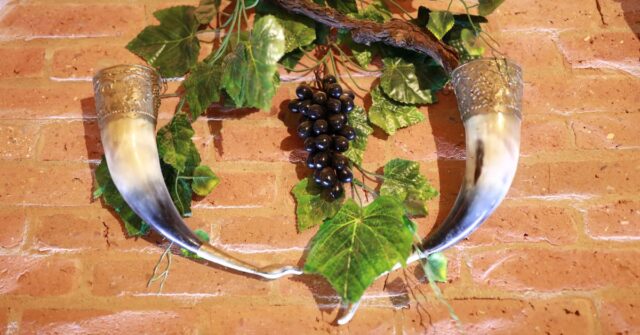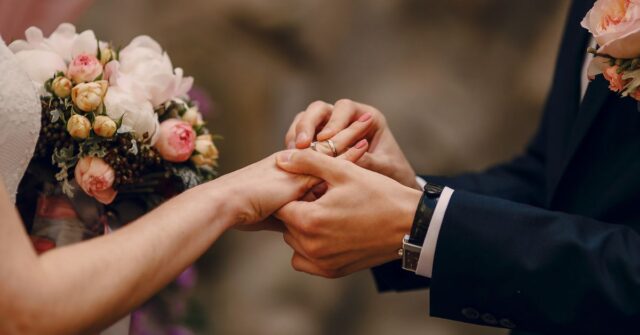The Vikings, known for their formidable seafaring and raiding, also held rich traditions that extended into their drinking culture.
This exploration into what the Vikings drank not only unveils their preferred beverages but also connects us to the historical and cultural significance behind each sip.
Ideal for enthusiasts of Norse history or those curious about the heritage behind their drinking horn, this guide promises a voyage into the past, revealing the tastes and traditions of the Viking Age.

Introduction to Viking Culture and Drinking Traditions
The Vikings, thriving from the late 8th to the early 11th century, were not just warriors but also farmers, traders, and explorers.
Drinking was a pivotal aspect of their social and ceremonial life, often reflecting their societal status, religious beliefs, and communal bonds.
Through the sagas and archaeological findings, we gain insight into their world, where drinking was more than mere consumption; it was a sacred act that wove into the fabric of Viking society.
The Role of Drinking in Viking Society
In Viking society, drinking was both a daily necessity and a crucial component of feasts and ceremonies.
It served as a social lubricant during gatherings, a symbol of hospitality towards guests, and a ritualistic element in honoring the gods.
The communal passing of a drinking horn signified unity and trust within the group, illustrating the deep-rooted significance of drinking traditions in building and maintaining social bonds.
Historical Sources on Viking Drinking Habits
Our understanding of Viking drinking habits comes from a mix of archaeological discoveries, such as drinking vessels and remnants of ancient brews, and literary sources like the Poetic Edda and sagas.
These texts, while sometimes allegorical, provide valuable insights into the types of drinks favored by the Vikings and the contexts in which they were consumed.
Types of Beverages Consumed by Vikings
The Vikings were adept at making a variety of drinks, some of which were everyday staples, while others were reserved for special occasions.
They drank a variety of beverages, including water, milk, fruit juices, and alcoholic drinks like mead, beer, and ale. These beverages reflected the natural resources available to them and their brewing ingenuity.
Mead: The Nectar of the Gods
Mead, known as the drink of the gods is a fermented drink made from honey, water, and sometimes fruits, herbs, or spices. It held a prestigious place in Norse mythology.
It was believed to be a drink of the gods and heroes, imbued with poetic or prophetic powers. This high regard for mead is reflected in its frequent mention in Norse sagas and myths.
Production and Ingredients
The production of mead varied, with recipes passed down through generations.
The quality and taste depended on the type of honey used and the additional ingredients that might include fruits, herbs, or grains.
This variety resulted in a wide range of meads, from sweet and luscious to dry and spicy.
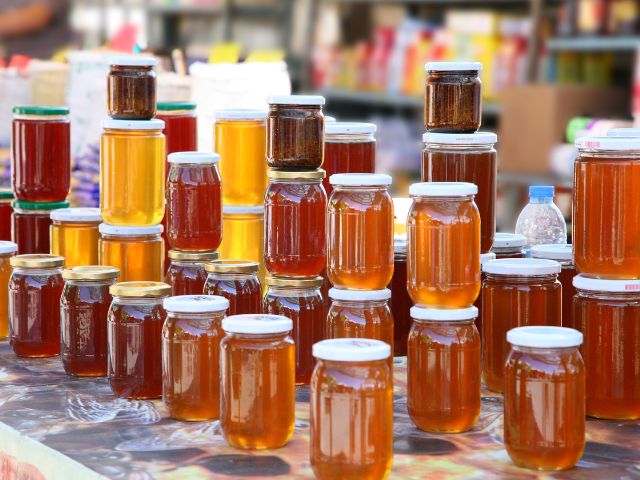
Cultural Significance in Norse Mythology
Mead occupies a central role in Norse mythology, most notably in the tale of the Mead of Poetry.
This story describes how the mead, brewed from the blood of a wise being, bestowed anyone who drank it with the gift of poetry and wisdom. Such tales underscore mead’s revered status in Viking culture.
Ale and Beer: Everyday Viking Drinks
Ale and beer were the everyday drinks of the Vikings, brewed from barley or other grains. These beverages were a dietary staple, providing essential calories and nutrients.
The brewing process was a communal activity, often undertaken by women known as alewives.
Brewing Processes and Ingredients
The Vikings used a simple brewing process that involved fermenting grains with water. They might add herbs, such as bog myrtle, for flavoring.
The lack of hops distinguishes their ale from modern beer, resulting in a sweeter and less bitter taste.
The Social Role of Ale in Viking Gatherings
Ale played a key role in Viking gatherings, including feasts, thing meetings, and religious ceremonies.
Sharing ale solidified community bonds, marked significant life events, and honored the gods and ancestors. It was more than just a drink; it was a symbol of unity and continuity.
Fruit Wines: Seasonal Delights
When available, the Vikings made wines from locally sourced fruits like apples, cherries, and berries.
These fruit wines were likely consumed during specific seasons or special occasions, adding variety to the Viking palate.
Types of Fruit Wines
The types of fruit wines varied depending on the fruits available in the region. Each had its unique flavor profile, from the tartness of berry wines to the sweetness of apple wines.
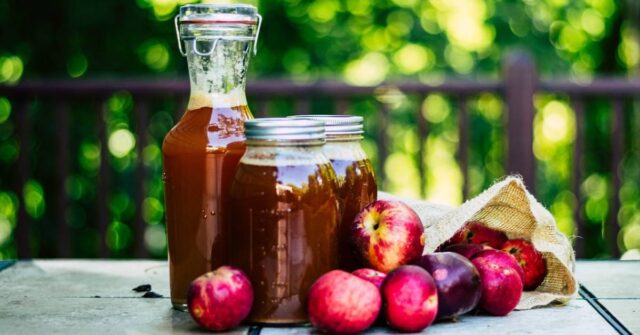
Occasions for Drinking Fruit Wines
Fruit wines were likely reserved for special occasions, possibly during harvest festivals or seasonal celebrations.
Their rarity and the labor-intensive process of making them may have bestowed fruit wines with a status symbol during these gatherings.
Imported Beverages: Contacts with Other Cultures
Through trade and exploration, the Vikings came into contact with other cultures, leading to the exchange of goods, including alcoholic beverages.
Wine, in particular, was a prized import, though it was likely consumed only by the elite due to its rarity and cost.
Wine from the South
Wine, especially from regions like France and the Rhineland, was imported and enjoyed by the Viking elite.
It was a luxury item, indicating wealth and status, and was possibly used in diplomatic contexts as well.
Exotic Drinks through Trade and Plunder
Beyond wine, the Vikings encountered other exotic drinks through their extensive trade networks and raids.
These could include spirits and brews from the British Isles, the Islamic world, and beyond, adding to the diversity of their drinking culture.
The Importance of Drinking Vessels
Drinking vessels in Viking culture were not just functional; they were imbued with cultural and sometimes spiritual significance.
From ornately decorated drinking horns to simple wooden cups, these vessels were integral to the Viking drinking experience.
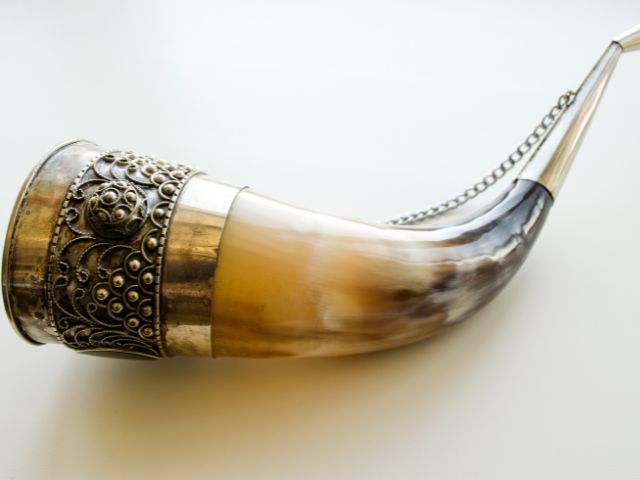
Drinking Horns: Symbolism and Status
The drinking horn, often made from cattle or goat horns, is one of the most iconic symbols of the Viking age.
These were not merely drinking tools but were also status symbols and cherished possessions, frequently decorated with metalwork and carvings.
Manufacturing and Decoration
Creating a drinking horn was a meticulous process that involved shaping, smoothing, and sometimes decorating with metals or intricate carvings.
The craftsmanship reflected the owner’s status and the horn’s ceremonial importance.
How to Choose and Care for a Drinking Horn
For those interested in owning a piece of Viking history, choosing a drinking horn involves considering the material, craftsmanship, and authenticity.
Caring for it requires proper cleaning and maintenance to preserve its beauty and functionality.
Other Viking Drinking Vessels
Besides drinking horns, the Vikings used various other vessels, including wooden cups, bowls, and even glassware. These items, often simpler and more utilitarian, were used daily by people of all statuses.
Wooden Cups and Bowls
Wooden cups and bowls were common among the Vikings, made from readily available materials and serving the practical needs of daily life.
They were durable, easy to produce, and used by everyone, from the common folk to the elite.
Metalwork and Glassware
Metal cups and glassware were less common but not unheard of, especially among the wealthy.
These items were often imported and prized for their beauty and rarity, used during special occasions to flaunt wealth and status.
Drinking Rituals and Social Practices
The act of drinking was embedded in various rituals and social practices among the Vikings, from the daily gatherings in the longhouse to the elaborate feasts that marked important events and seasons.
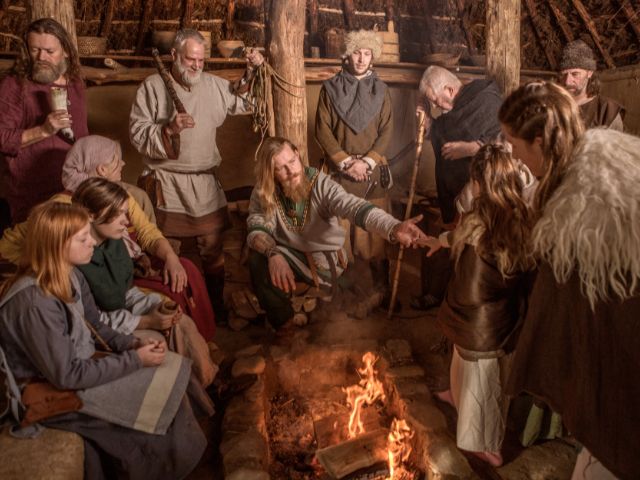
Feasts and Celebrations: The Heart of Viking Social Life
Viking feasts were grand affairs that could last for days, involving not just the consumption of food and drink but also storytelling, games, and religious ceremonies.
Alcohol played a central role in these events, facilitating camaraderie and celebrating achievements.
The Role of Alcohol in Viking Feasts
During feasts, alcohol was abundant, serving as both a celebratory element and a means to honor guests and gods alike.
It was during these gatherings that the communal aspect of drinking truly shone, reinforcing social bonds and communal identity.
Typical Drinking Games and Toasts
Drinking games and toasts were common at Viking feasts, often involving challenges or the recitation of achievements and ancestors.
These activities were not just entertainment but also a way to strengthen social ties and affirm communal values.
Religious and Ceremonial Uses of Alcohol
Alcohol also had a significant role in Viking religious and ceremonial practices.
It was used in offerings to the gods, in rites of passage, and during seasonal festivals, highlighting its integral role in both the spiritual and mundane aspects of Viking life.
Sacrifices to the Gods
Alcohol, particularly mead and ale, was often used in sacrifices to the Norse gods.
This could involve pouring libations as offerings or including drinking vessels in grave goods to accompany the deceased in the afterlife.
Seasonal Festivities and Rituals
Seasonal festivities, such as midwinter Yule celebrations, were marked by generous consumption of alcohol.
These events celebrated the cycles of nature, the gods, and the community’s endurance, with alcohol serving as a vital component of the festivities.
Modern Legacy and Reenactment
The fascination with Viking culture extends into the present day, with a resurgence of interest in their brewing techniques, drinking vessels, and the communal spirit of their gatherings.
This modern legacy offers a window into the past, allowing enthusiasts to connect with Viking traditions in a tangible way.

The Revival of Viking Brewing Techniques
Modern brewers and enthusiasts have taken to reviving ancient Viking brewing techniques, experimenting with traditional ingredients and methods to recreate the flavors of the past.
This revival not only honors Viking heritage but also enriches our contemporary culinary landscape.
Drinking Horns in Modern Culture
Drinking horns have seen a resurgence in popularity, not just among historical reenactors but also in contemporary settings.
They serve as a link to the past, a decorative item, and for some, a functional piece of drinking paraphernalia, embodying the spirit and craftsmanship of the Viking age.
Collecting and Using Replica Viking Drinking Horns
For those interested in Viking culture, collecting and using replica drinking horns can be a way to connect with history.
These replicas range from functional reproductions to elaborate decorative pieces, each telling a story of the past.
Participating in Viking Reenactment Events
Viking reenactment events offer a unique opportunity to step into the shoes of the Norsemen, experiencing the rituals, battles, and daily life of the Viking age.
Drinking plays a part in these events, with mead and ale flowing freely in a nod to historical accuracy and communal spirit.
Conclusion: The Enduring Legacy of Viking Drinking Traditions
The drinking traditions of the Vikings, steeped in cultural and historical significance, continue to captivate and inspire.
Through the exploration of their beverages, rituals, and vessels, we gain not only a deeper understanding of Viking society but also a connection to a past that, though distant, feels remarkably alive and relevant.
As we raise our drinking horns today, we echo the communal spirit and reverence for tradition that characterized the Viking age, celebrating an enduring legacy that transcends time.
